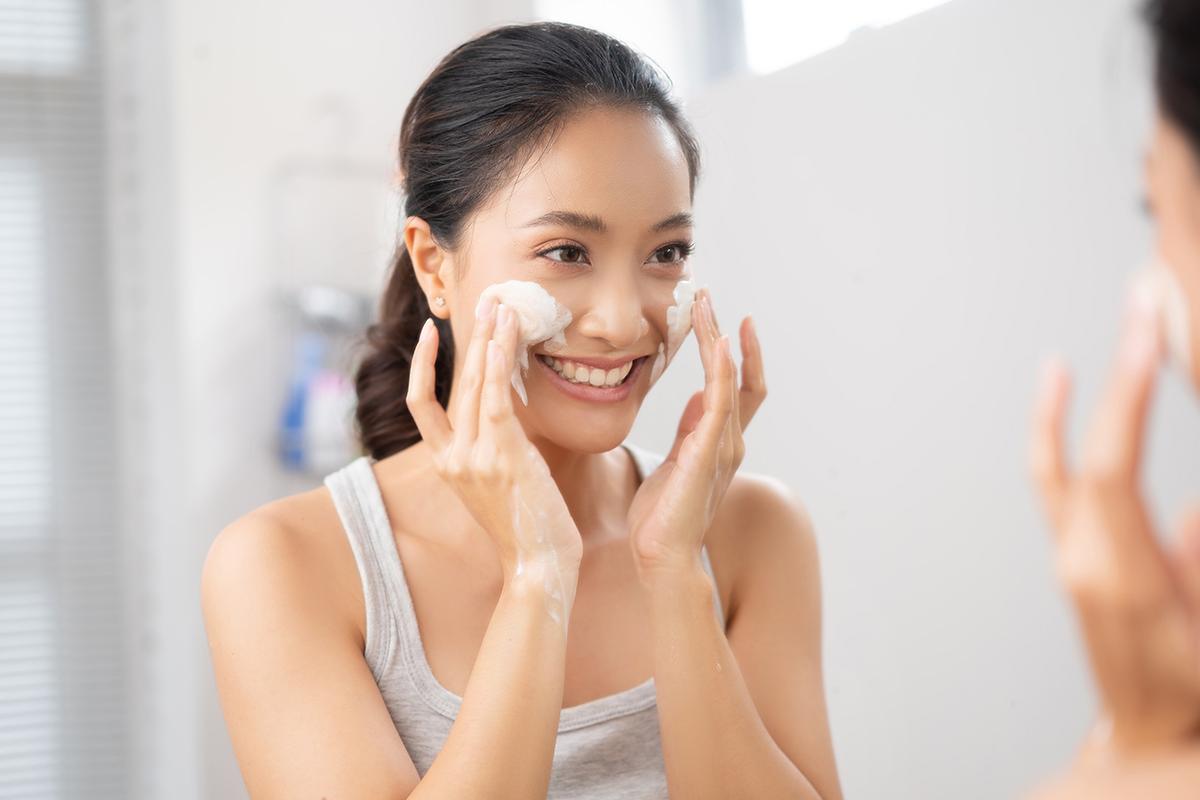How to Apply Foundation Application Guide
Applying foundation is an art, and like any masterpiece, it requires the use of the proper equipment and procedures. Understanding your skin type, picking the appropriate hue, and selecting the appropriate application tool can put you on the route to a faultless canvas for your makeup masterpieces. So, let's go over the fundamentals of applying foundation.
How to Apply Foundation: Your Guide to a Perfect Canvas
Getting to Know Your Skin
Before we go into how to apply foundation, let's talk about how important it is to recognize your specific skin type. In the realm of cosmetics, knowing your skin type is like having a hidden weapon. When it comes to foundation, each skin type has its own peculiarities and needs.
Dry skin need moisture as well as a foundation that does not highlight flakiness. The Lakmé 9 to 5 Primer + Matte Perfect Cover Foundation Mini is your hydration hero if you have dry skin. This foundation not only has a beautiful matte finish, but it also has a primer in it to keep your skin nourished and moisturized. It's a little powerhouse that combines coverage and moisture to keep your skin smooth and beautiful all day.
Oily skin needs mattifying products that control shine all day. The Lakmé 9 to 5 Primer + Matte Powder Foundation is ideal for individuals with oily skin. This powder foundation is carefully formulated to reduce shine and provide a matte, long-lasting look. Its primer-infused composition provides a flawless application, while the powder absorbs oil throughout the day to keep your skin looking fresh and shine-free.
Sensitive skin requires additional attention and a mild alternative that will not clog pores, impact existing blackheads and pimples, or trigger new outbreaks. The Lakmé Absolute Skin Dew Serum Foundation is a soft and caring option for that additional TLC. This foundation has a serum-like feel and offers lightweight coverage, making it ideal for sensitive skin. It not only provides a natural, dewy finish, but it also includes elements that soothe and protect your skin, making it a soothing and pleasant alternative for individuals with sensitive skin.
Choosing the Right Color
Now that you've discovered your skin type, let's talk about how to choose the appropriate shade. Consider foundation to be an artist's palette: the proper tint blends in with your skin tone while accentuating its inherent beauty.
It's not only about selecting a color that looks nice in the bottle; it's also about matching the undertone and hue of your skin. Skin undertone refers to the faint tint under the surface of your skin and is often classified as cold, warm, or neutral.
Examine the veins on the bottom of your wrist or the back of your hand in natural light to determine your undertone. You most likely have cold undertones if they seem more blue or purple. You most likely have warm undertones if they seem greenish. If you can't tell or they seem to be a combination of the two, you may have neutral undertones.
Choose a foundation with a matching undertone after you've discovered your undertone. Cool undertones complement foundations with pink or rosy overtones, whereas warm undertones complement foundations with a yellow or golden tint. To get neutral undertones, just concentrate on the intensity of your skin, i.e. the brightness or darkness.

Additionally, in natural light, test the foundation shade around your jawline to ensure it blends flawlessly with your skin tone.
Foundation brushes are ideal for creating a flawless, airbrushed look. They enable for accurate application and blendability if you know how to apply foundation with a brush.
Sponges: When moistened, beauty sponges provide a natural and even finish. They're amazing for blending and creating a soft focus impression on your skin.
Fingers: They produce warmth, which aids foundation absorption and is one method for applying foundation to dry skin. This approach is great for a more natural appearance, but it may take some effort to get an even application.
How to Use Foundation
After cleaning, moisturizing, and putting primer to your face, you may apply foundation.
Begin with a little quantity of foundation, dot it all over your face, blend it in, and softly tap it into your skin. If you're on the hurry and want a simple, fast makeup look, learn how to apply foundation with your fingertips.
A stippling brush is an excellent tool for applying liquid foundation. To learn how to apply foundation with a brush, apply foundation to your face and mix it evenly using a stippling brush in gentle, circular strokes. Stippling brushes are always made with duo-fibers to assist you achieve a smooth, even finish with your foundation.
A wet beauty blender aids in the absorption of foundation into the skin. The beauty blender's design (formed like an egg) makes it exceptionally simple to mix product into regions such as the hairline, under the eyes, and so on. So, how do you use a sponge to apply foundation? Take care not to drag the blender over your skin. Instead, lightly bounce it off the skin, ensuring that the lotion is well rubbed in.
Apply the foundation to your face and neck using a flat foundation brush in downward strokes. Then, using the same brush, tap the product one more. Don't miss the tapping phase since it helps the foundation soak into your skin and pores.
( By Naveen Sharma )









